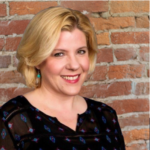Your people are connected to and passionate about your mission, but do they feel valued as an employee and as an individual?
When thinking about your organization’s investment in your people, it is critical to understand it is an ongoing commitment—and one that goes beyond simply the allotment of financial resources. It requires the devotion of time, energy and strategy to listen to, understand and respond to the needs of your people in alignment with your organization’s goals. Starting to think of ways to deepen your investment in your people is a great first step in expanding your perspective and moving toward a more holistic approach to learning and development.
Where to Begin
1. Assess
To identify the areas in which your efforts would be most impactful to your people, ask. Consider conducting an assessment or focus groups, perhaps around your organization’s core values, to find out what is most important to your people and where there are opportunities for professional growth and development. And, does what staff report they need align with what will make them successful as a part of the organization? What are staff competencies (or leadership competencies) that are most important to sustaining your mission? Ask about equity and how they experience it. Are there engagement resources available to everyone? Once you identify the areas in which your people are seeking change or support, it is easier to more effectively align your initiatives.
2. Align
The next step is to take that feedback that you receive and align it with the creation of a strategic framework for learning and development. This framework, built upon listening, should outline opportunities across every level of your workforce. It will also allow you to clearly see and measure how those new opportunities directly support the growth of employee competencies in that area.
While employees are the ultimate owners of their development, providing a framework will lend to the success of their growth. Thus, as you are creating this framework, consider including ideas of learning opportunities employees can pursue and/or what people in their roles previously pursued. But also build in a degree of flexibility to adapt to new needs, ensuring there is space and freedom for employees to bring forward their development ideas and how those may fit into their roles.
3. Analyze
Once you’ve created and implemented a framework for your workforce, measuring the effectiveness of learning initiatives is necessary to maintain relevance and impact. Revisit your efforts to gauge what you need to do differently to make those initiatives more meaningful or drive a different outcome. Also, examine organizational objectives and how your learning and development plan can support the achievement of those goals. This goal setting for learning and development to support the organization as a whole incorporates intention and accountability, both for the organization and individual employees, into your framework.
4. Repeat
As described before, an investment in your people’s learning and development is cyclical rather than a static strategy. And, adopting a dynamic mindset around the approach to developing staff will serve to enhance all aspects of your organization. As you invite your people to learn, also invite them to share what they’ve learned with the organization. Think creatively about how employees can apply the areas they’ve grown in, no matter the topic, to foster a more positive or effective workplace. For example, did an employee recently seek a yoga instructor certification? Consider having that staff member lead a class for the organization or making them a wellness ambassador to share related tips and promote healthy work-life integration.
A Holistic Approach
The pandemic has provided us a unique window into people’s lives outside of work. As we interact virtually, we can see houses, pets, partners, spouses, children, family, etc. This means that now more than ever, organizations are positioned to think about the whole person. We bring our whole selves everywhere, and the workplace is no exception. A holistic approach to learning and development that provides an employee with an outlet to express a unique interest is an acknowledgement of that. The world we live and work in today has become an invitation to be open in the ways we haven’t been before.
In summation, if your organization feels its greatest responsibility is to your people, it should lead to a learning and development program that doesn’t just check a box, but that is genuinely interested in seeing staff grow. As an employer, ask what you can do to nurture that growth. And, how will that growth benefit the employee not only professionally, but also personally? While it should tie back to their role, there is room, or nuance, in creating the space for them to stretch in ways that can make them feel seen, heard and valued as a part of your organization and allow them to engage fully and productively in their work. Ultimately, intentionality will deepen the impact of your efforts and demonstrate to your people that you value not only their work toward the mission, but who they are as individuals.
Want to hear more on from our authors on this topic? Click here to watch the accompanying webinar recording!
Contributing Authors

Alexandra Taylor brings over 20 years of nonprofit experience, focused on strengthening organizations around diversity, equity and inclusion; leadership development and staff training; nonprofit operations and talent management; philanthropy; strategic planning; and stakeholder engagement. Read Taylor’s full bio. |
 Lisa Wright Ponce leverages over 20 years of nonprofit and for-profit sector experience in her role as Senior Consultant. Lisa has proven capacity for strategically assessing diverse organizations and designing multi-faceted workplace solutions. Her expertise in organizational culture assessment and change management has positioned Lisa as an advisor to nonprofit executives who are undertaking business and cultural transformation, including changing their operational models. Read Lisa’s full bio. Lisa Wright Ponce leverages over 20 years of nonprofit and for-profit sector experience in her role as Senior Consultant. Lisa has proven capacity for strategically assessing diverse organizations and designing multi-faceted workplace solutions. Her expertise in organizational culture assessment and change management has positioned Lisa as an advisor to nonprofit executives who are undertaking business and cultural transformation, including changing their operational models. Read Lisa’s full bio. |
